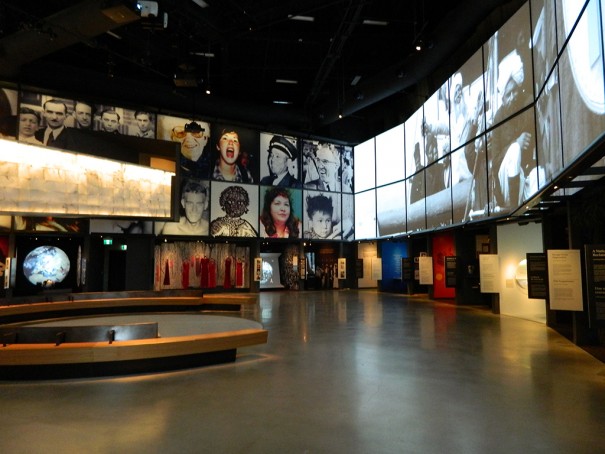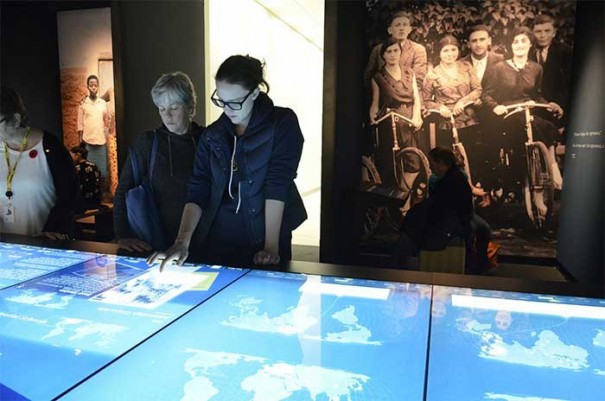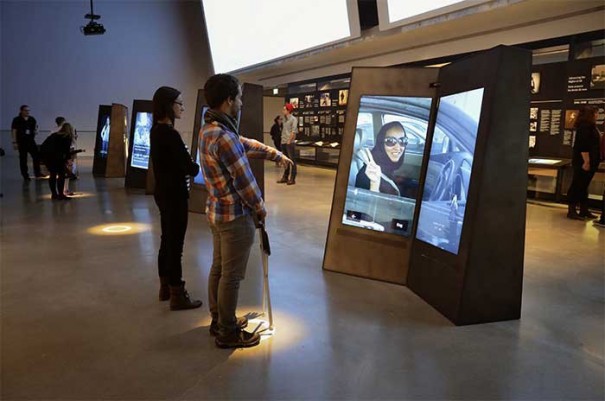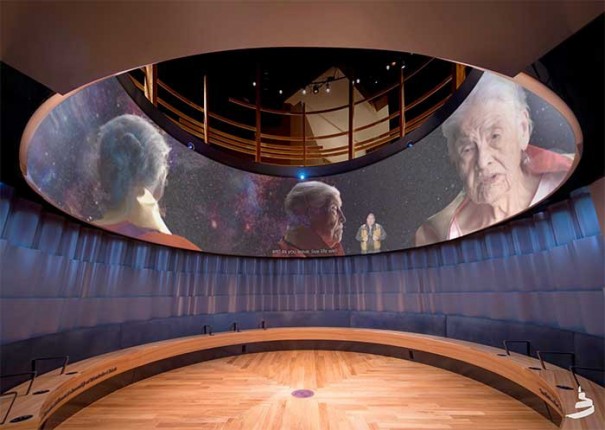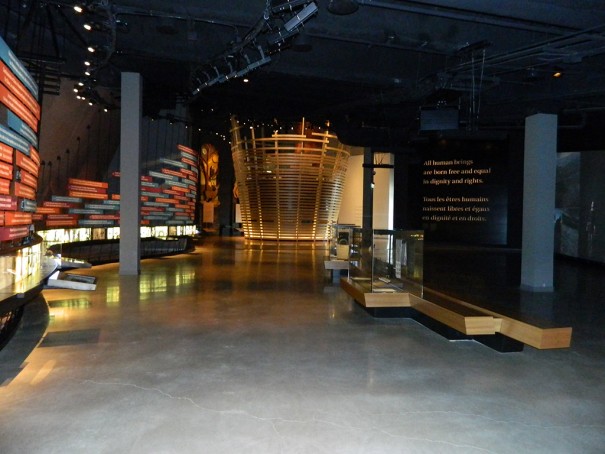The Canadian Human Rights Museum breaks molds with its avant -garde installation Av
The architecture of the building that houses the Canadian Museum for Human Rights of Winnipeg has raised Electrosonic important challenges when implementing the complex AV infrastructure of its 11 Galleries.
The new Canadian Museum for Human Rights (Canadian Museum for Human Rights) The Winnipeg (Manitoba) presents an innovative architectural design, Made by the American Antoine Predock, in which steel stone has been used, Glass and concrete for its construction and that has been equipped with alabaster ramps and stone -coated bridges, strut of an atrium of 51,8 metros.
A design that has raised important challenges to Electrosonic When integrating the complex AV installation with which the building has been equipped.
Electrosonic has been responsible, Next to Advance Pro, of the installation of the audiovisual design of the eleven galleries that make up the museum and where a large number of interactive touch screens and projection equipment have been installed, as well as an audio infrastructure that has had to adapt to the acoustics of the building. A project in which companies have also participated SH Acoustics, LLC of Milford and Connecticut to provide the sound structure.
“This is not a museum with the typical galleries since there is not a single wall at right angles, Some are triangular with less than half a meter of space at its broadest point. It is designed to see the exhibitions made on the fifth floor from the first floor, Aspects that had to have account when performing the audio infrastructure ”, Explica Steve Haas, SH Acoustics president and consultant.
In addition, Throughout the museum, different theaters are arranged, There are even one outdoors in which three projectors have been installed on the roof Barco HDX-W20 Flex that are managed with the system Dataton Watchoout to be able to make the projections.
The indigenous gallery perspectives is one of the most spectacular space of the museum that focuses attention a theater where a 360º curved screen has been installed where visitors can watch a video where stories of indigenous rights and responsibilities are shared, counted through four different generations. The room also has six CNWU-61B and a seventh available for special presentations. An infrastructure that is also managed by Watchout software.
Sala Canadian Journeys, The biggest museum, Explore dozens of Canadian stories, of democratic rights to linguistic rights and freedom of conscience to non -discrimination. It has a theater with a single CNWU-61b projector, and a digital canvas that transmits stories through a screen of 29 metros. It also has four projectors Panasonic PT-DS20ku.
Another gallery, la Examining the Holocaust, presents a single screen and a CNWU-61B ship projector. In its walls, fragments are shown that symbolize the ‘Infamous Kristallnacht’ of the Nazis. A second theater, Visualize a film with the Ukrainian holocaust (Ukrainian Holodomor), presenting a similar configuration. A combination of four projectors feed the projection of 24,3 metros.
Finally, In the Rights Today Gallery, three CNWU-61BS ship equipment that visualizes the contents have been installed, On the surface of an interactive wall, that are carried out using a Tvone system. It also has a small theater that seeks that the visitor think critically about what is seen and read.
Interactive AV infrastructure
Visitors also have, Throughout his visit to the Canadian Museum for Human Rights, of numerous interactive screens, Among which you can see tactile models Touch Elo of 27 inches. To ensure that everyone can access interactive services, Electrosonic collaborated closely with the museum team to design Key Pads that allow people with disabilities to also enjoy this technology.
The museum has an audiovisual infrastructure that includes equipment from different manufacturers, Thus, in the Canadian Journeys there are different samsumg equipment, NEC y Viewsonic; While the Protecting Rights in Canada gallery has 15 Information points that make up elo and monitors touch screens Samsung of 65 inches.
In the exploration gallery of the Universal Declaration of Human Rights, four interactive stations have been installed, each of them composed of two Samsung monitors of 55 inches mounted in portrait format and endowed with gesture recognition technology Microsoft Kinect. A digital study table composed of 12 Tactile multitouch screens 55 Inch moured inch., side by side. A Literacy Theater incorporates two Samsung monitors 75 inches, which is hung in vertical mode, one over the other.
Actions Count, A gallery aimed at young visitors, It presents a visual solution composed of three interactive tables that offers a gesture recognition game with which visitors are intended to reflect on how decisions taken in everyday life affect others. To complete the experience, the room has three CNWU-61b projectors.
Sound and audio
In this museum of challenging architecture, sets of compact linear speakers and ceiling arrays have been deployed Brown Innovations, Renkus Heinz and shelf equipment Tannoy 2-D to improve the feeling of immersion in the theaters. In the galleries examining the holocaust and breaking the silence speakers have been used Innovox, embedded in banks.
El Indigenous Perspectives, which has banks located throughout the stay to facilitate the visualization of the big panoramic screen and visual access to the central area where guest artists intervene raised technicians a great challenge. Instead of directing the sound through the room, The tannoy speakers were placed behind the screens.
It has also arranged a wave -shaped wooden wall that creates the perfect dissemination in this circular room and offers another ‘visually unique design element’ with subwoofers compact from James Loudspeaker placed under banks.
Biamp Audiaflex CMS were the main audio processors used in the museum, While Medialon Manager provides the supervision and control of most teams in the museum.
You liked this article?
Subscribe to us RSS feed And you won't miss anything.
• Section: Thoroughly, Audio, Study cases, Control, OUTSTANDING, Digital signage, Display, Production, Projection



